Thursday, December 31, 2009
What is the best-all-in-one compact travel camera?
Saturday, December 12, 2009
Thursday, December 10, 2009
The Photographer Project
Enter The Photographer Project, a fascinating personal photography project from New York-based photographer Brian Ach.
It’s all in a day’s work for celebrity photographers, who regularly grace red carpets and are granted inside access to exclusive premieres, events, and concerts. The Photographer Project prompted over 60 New York entertainment photographers to answer questions such as:
“Which celebrity undeservedly gets a bad rap?”
“Who is your favorite/least favorite celebrity to photograph and why?”
“Tell, please, in detail, about the most crazy, interesting, funny, odd, or touching celebrity story that you have been part of.”
This new coffee table staple consists of full-length studio portraits of entertainment photographers who are based in New York City, along with ten standardized questions they answered about celebrities and celebrity photography. The Photographer Project gives the tabloid-hungry public a unique, exclusive glimpse into the world of celebrities, parties, and entertainment photography. The portraits are as unique as the varied personalities of the photographers themselves, and The subjects include high-profile photographers such as Kevin Mazur, Patrick McMullan and others, as well as paparazzi shooters.
The Photographer Project was originally conceived to raise funds for Mr. Paul Hawthorne and his family. Paul was an entertainment photographer in New York City, and one of the best. He became ill with amyloidosis, a rare blood disease, in the fall of 2008, and passed away from complications on December 20, 2008. Paul was a son, a (twin) brother, husband to Amy, and a father to two great kids, Max and Lucas.
The Photographer Project has been made into a fascinating book, containing the aforementioned portraits and questions, along with an irreverent glossary of industry-specific terms and outtakes from the photo sessions. A portion of the proceeds from sales after printing will be donated by Brian Ach to the Hawthorne family.
The project is available in book form at blurb.com here.
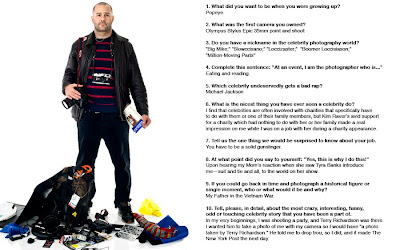
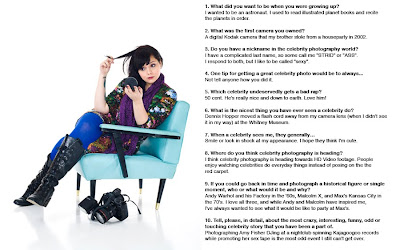


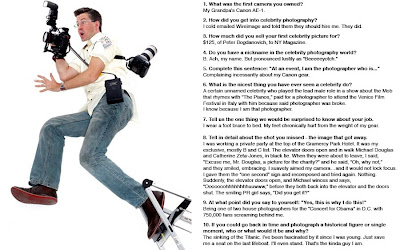
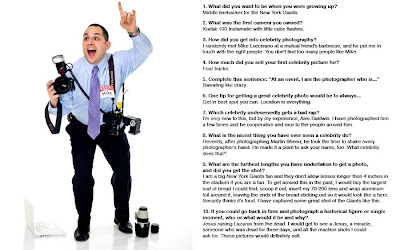
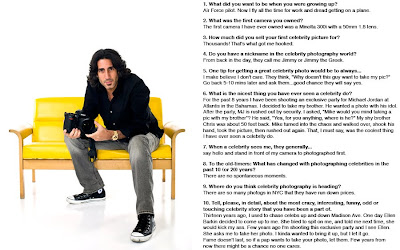
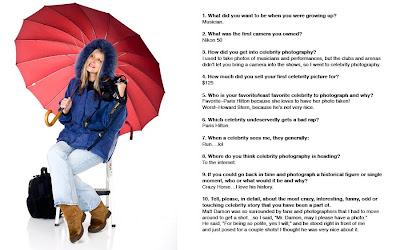
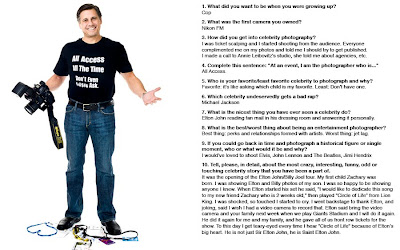
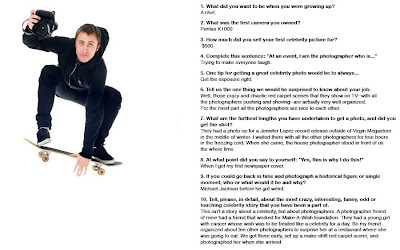
Saturday, December 5, 2009
Launch of THE PHOTOGRAPHER PROJECT
FOR IMMEDIATE RELEASE
Provides an exclusive glimpse into the world of celebrities, parties, and entertainment photography.
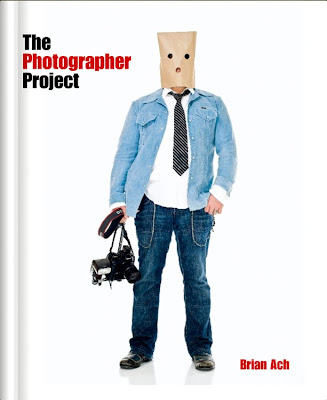
Project Originally Conceived to Raise Funds for Now-Deceased NYC Entertainment Photographer, Paul Hawthorne.
New York, NY- December 5, 2009- Ever wonder what it’s like to stand two feet away from Hollywood A-lister’s like Tom Cruise, Beyonce, Brad Pitt, Angelina Jolie, and Elton John? Enter The Photographer Project, a fascinating personal photography project from New York-based photographer Brian Ach.
It’s all in a day’s work for celebrity photographers, who regularly grace red carpets and are granted inside access to exclusive premieres, events, and concerts. The Photographer Project prompted over 60 New York entertainment photographers to answer questions such as:
“Which celebrity undeservedly gets a bad rap?”
“Who is your favorite/least favorite celebrity to photograph and why?”
“Tell, please, in detail, about the most crazy, interesting, funny, odd, or touching celebrity story that you have been part of.”
This new coffee table staple consists of full-length studio portraits of entertainment photographers who are based in New York City, along with ten standardized questions they answered about celebrities and celebrity photography. The Photographer Project gives the tabloid-hungry public a unique, exclusive glimpse into the world of celebrities, parties, and entertainment photography. The portraits are as unique as the varied personalities of the photographers themselves, and The subjects include high-profile photographers such as Kevin Mazur, Patrick McMullan and many others, as well as paparazzi shooters.
The Photographer Project was originally conceived to raise funds for Mr. Paul Hawthorne and his family. Paul was an entertainment photographer in New York City, and one of the best. He became ill with amyloidosis, a rare blood disease, in the fall of 2008, and passed away from complications on December 20, 2008. Paul was a son, a (twin) brother, husband to Amy, and a father to two great kids, Max and Lucas.
The Photographer Project has been made into a fascinating book, containing the aforementioned portraits and questions, along with an irreverent glossary of industry-specific terms and outtakes from the photo sessions.
More of the Project can be seen at
The book is available immediately in time for the holiday season at
http://www.blurb.com/bookstore/detail/1041918
Pricing is $69.95 for an image-wrap hardcover and $49.95 for softcover, both printed
on premium paper. A portion of the proceeds from sales after printing will be donated by
Brian Ach to the Hawthorne family.
A book-launch party is tentatively scheduled for December 19. Details TBA.
A traditional publisher is being sought for the book.
Sunday, November 29, 2009
Friday, November 20, 2009
Thursday, November 19, 2009
Tuesday, November 10, 2009
Tuesday, November 3, 2009
Celebrity Sloth Scribe Tyler Durden Makes Fun of Death of Photographer at Lady Gaga Event
In the post, titled "gaga is so ugly its now literally killed someone," Durden goes on a rant, saying "she’s so ugly in real life it’s now proven to be fatal." He manages to get the details of the incident completely wrong, saying that the photographer fell to his death after Gaga arrived.
In reality, the photographer, who worked with AcePix, was packing up his gear after the event when he collapsed. He was attended to by paramedics on the scene, and was pronounced dead at the hospital that night from an apparent heart attack.
Durden then states, "I’d rather have my friends and family find me naked in a noose with gay porn on the TV and a chair leg shoved up my ass than to have ‘poker face’ playing in their head whenever they think of me."
Is Durden so desperate to have his name spread around that he has to make fun of a well-liked, honest, and affable photographer trying to make an honest living? A person died here Tyler. A.J. was a friend to many people. I know that is hard for you to comprehend. Remember what happened to Perez when he made despicable comments after MJ passed away? Tell me Tyler, can you summon the brain cells that you have left to spell B-A-C-K-L-A-S-H?
RIP Tyler Durden.
Photographer A.J. Sokalner dies
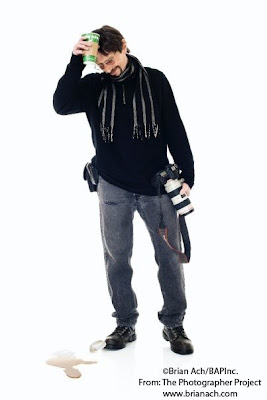
Photographer A.J. Sokalner dies
Shot celebrity photos for ACE Pictures
By Daryl Lang, Photo District News
Nov 3, 2009, 02:44 PM ET
Celebrity shooter A.J. Sokalner, admired by his colleagues for his quiet, passionate commitment to photography, collapsed Monday night outside an event in New York and died a short time later, according to his agency.
Sokalner was pronounced dead at Bellevue Hospital, said Philip Vaughan, owner of ACE Pictures. Vaughan said an emergency worker told him Sokalner had suffered a heart attack.
Sokalner collapsed minutes after entertainer Lady Gaga arrived at the ACE Awards, an event hosted by the Accessories Council at Cipriani on 42nd Street. He was part of a group of about 25 photographers working a rope line outside the venue, according to friend and fellow photographer Dennis Van Tine.
Gaga was the big star of the night, and photographers waited inside and outside the venue for her arrival at about 9 p.m. Van Tine was inside when he heard from another photographer that Sokalner had fallen outside. Van Tine says he went out and saw paramedics attempt to revive Sokalner for several minutes, then load him into an ambulance. Another photographer notified Sokalner's girlfriend. She and several photographers gathered at the hospital, where they learned Sokalner had died.
Sokalner was in his late 50s and lived in Manhattan. Vaughan says Sokalner was a hard worker who shot for ACE Pictures on a daily basis. "He was very well liked, he was very well respected," Vaughan says. "He was a real photographer and he did it because he loved it."
Van Tine says Sokalner studied the works of great photographers and tried to inject "pizazz" into his images, and was "one of those silent guys who goes out and shoots every day."
"He was a cynic in the great New York tradition," Van Tine says. "He knew what was right, he knew what was wrong, he knew who the crooks were."
From Brian Ach: "A.J. was a good guy, always nice to a fault, but didn't let anyone get away with anything. Although he might have appeared a little rough around the edges, he was a gentle guy. He was always trying to get better treatment for the photographers at events, and was often the first to arrive. Courteous to a fault, he was a quiet guy who always greeted me with a firm handshake and a "Hello, Mr. Brian." He tried to shoot something better than the boring, frontal, full-length shots the magazines clamored for. We would talk about gear and technique. When I asked him to be a part of The Photographer Project, at first he demurred, saying, "Why would you want me in it?" I insisted, and he showed up and was game to collaborate on a great shot. His quiet energy and constant presence will be missed by me and many of his colleagues, as he was definitely "One of the good guys."
Tuesday, August 25, 2009
New Book Published- The Automobile As Art
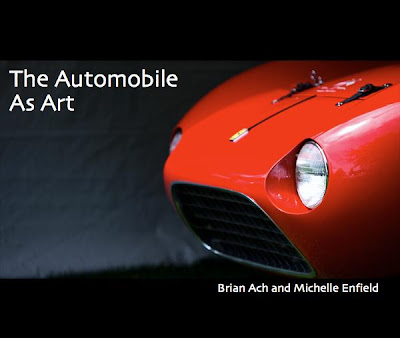 The much-anticipated book from Brian Ach and Michelle Enfield is finally here. The Automobile As Art.
The much-anticipated book from Brian Ach and Michelle Enfield is finally here. The Automobile As Art.A Picasso will never hit 140 miles per hour. You probably wouldn't want to take a buffer to a Rodin. And last but not least, your garage is definitely not the best place for a Monet.
This is the singular uniqueness of Automobiles as Art. Not only can you admire them from afar-the beauty of their lines, the workmanship, the exquisite engineering-but you can also crank up that glorious v12, feel the heat from the manifold, smell the old leather and oil, and take the old boy for a spin, all the while feeling the wind on your face and the rumble of the engine in the seat of your pants. Try that while looking at that Cezanne you just stuck on your wall.
Collector cars have recently started to come into their own as objects of art, with price tags into the 7-figures becoming commonplace. Of course, your "vintage" Pinto won't have quite the same cachet as a 250 GT Spyder California SWB, but hey, all in the eye of the beholder, right?
From events such as the Greenwich Concours d'Elegance to the vintage races at Lime Rock Park, you'll enjoy the beautiful pictures and striking design of this book for years to come. Makes a unique and great Holiday gift!
See a preview of the book or and purchase it at Blurb.com
Tuesday, August 4, 2009
Portfolio Do's and Dont's!
1. You have to have a "Body of Work." That means that the person looking at your portfolio should know that, for this portfolio, "THIS" is what you do. If you have random pictures of people, food, scenics, and cars, the person may think that you are a decent photographer, but they probably won't know what YOU DO and what they could hire you for.
2. You have to have a Point of View. How do you feel about the work you do? Is it humorous, serious, sarcastic, tongue-in-cheek...? It's YOUR art, so when you are shooting things or putting your book together, make sure their is a viewpoint inherent in the body of work that comes across. This is so the viewer can gain some insight into the work you would do for them if they hire you.
3. You have to learn how to edit and present your BEST work. If you have 50 shots you think are good enough for your book, You should bring a critical eye to them and narrow them down to your best shots that fulfill the above two points. 10 shots which make up a Body of Work, have a Point of View, and are dead-on GREAT are better than 50 shots with 10 good shots mixed in. Learn how to edit. This is the skill many amateurs and advanced amateurs are lacking. You must learn how to narrow down those shots and pick the best one-- and you must know WHY it is the best.
I regularly edit 1,000 shots of my own work A DAY, trust me, you get really quick at it.
The book should have a beginning, middle, and end. Start out with your strongest stuff, and end with your second strongest stuff.
www.brianach.com
Monday, August 3, 2009
Friday, July 31, 2009
Photography Rant-Amateurs listen up!
The best camera is the one you have and actually use.
People ask me all the time how they can get good fast, they want to be the best immediately. I ask them how much they shoot. They say once or twice a week. I tell them they have to be OBSESSED with shooting, they have to shoot all the time, on the way to work, going home, when traveling, portraits of friends, everything. They instead want to buy the next Nikon D3X or 200-400 lens. They think that is the KEY to becoming better.
I will tell you a secret. A good photographer with last years consumer beginnner SLR and a single, good 35mm or 50mm lens will be able to outshoot a mediocre photographer with the best new SLR camera with 10 lenses. Why?
They know how to use it. Most amateurs who are serious sort of skip the part where they learn their camera inside and out. Trust me, they do. Can you change your settings in the dark or without looking at your camera? How long does it take you to change your white balance? F-stop? Shutter speed? Spot metering to evaluative? iso? Single-shot to Servo focus? RAW to JPEG? When you have to think about how to do these things while you are shooting something, it takes you out of the moment and you will miss it.
With respect to the talk about acting, I know a bit about that too. And you are right about what you say. I compare it to when an actor is trying to get off-book. Every time he or she pauses for a second and calls, "Line!" they find themselves out of the moment and out of the scene. Photography is the same way. You have to know everything about your camera from the ground up and know how to use it and why to do things if you want to actually have a chance of having a career doing this, just like in acting. You have to think on your feet, no matter what you shoot--food, celebrities, stock, car racing, sports, portraits, or flowers--because somebody else is already doing it, and probably better than you.
So to recap- LEARN YOUR CAMERA. Start simple. Start with a 50mm prime, and use it for 6 months. Know everything about it. Then move on and buy something else. If you need something during this time, rent it! Don't buy an $1800 70-200 F2.8 lens because your friend is going to pay you $50 to shoot his nephews' soccer game. Rent it. Wait to buy the equipment until your job DEMANDS it or your billing can pay for it.
I find it slightly amusing that you "outgrew" your D60 in two months. I have a 30 year old Canon F-1 with a 35mm F2.0 lens, and I haven't outgrown it in all the time I have owned it.
I find that many amateurs who talk incessantly about "pixel size" and "sharpness" and "megapixels" (I am not implying necessarily you, by any means) spend too much time blabbing about things that don't matter, instead of taking pictures. You can't get better by BUYING equipment. You can only get better by using what you have.
Nothing you buy will make you a BETTER photographer, you have to do that yourself with practice and buy accumulating knowledge. Buying things might expand your repertoire of shots. It might make you feel cool. It might make you bankrupt. But it will NOT make you a better photographer. So, before you go to buy that new camera or lens because you NEED it to make you better, learn how to use what you have.
After all, race car drivers don't start out in Formula 1. They race go-karts.
Actors don't start out doing "Hamlet." They do improv, scenes and one-acts.
Photographers don't start out with a D3X and a 400mm F2.8 VR, or a Phase 1 Hassy shooting at Pier 59 with a capture team and 3 assistants and 4 grips on a 3 day shoot for Louis Vuitton. They start with a Canon AE-1 with a 50mm lens and some Tri-x (or a digital Rebel and a 18-55 zoom now, sadly I guess.)
But most people simply don't want to put in the time and effort to get good like the old days. They want to be good now. American Idol and reality TV have made us the "Skip To The End" Generation.
Anyway, hope all this crap I wrote helps someone out there. Feel free to share your thoughts. Just remember, this comes from someone who has shot food for national magazines, Sundance, Tribeca, Venice film festivals, stock around the world, travel, and has shots published every day worldwide. So....yes, I do know what I am talking about.
Monday, June 1, 2009
Prince Harry plays polo in New York City
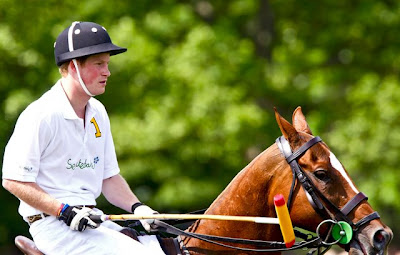
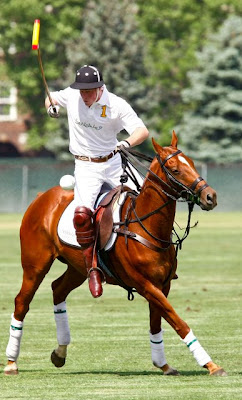
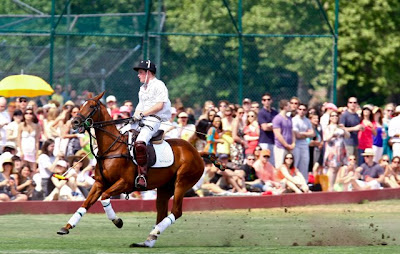
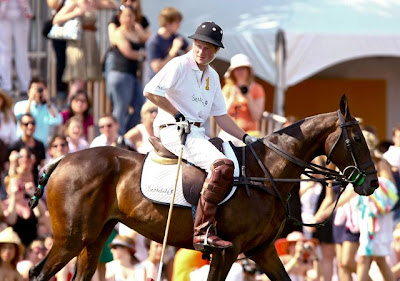
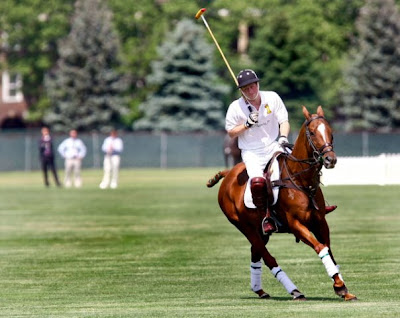
Wednesday, May 27, 2009
Superb Night Travel Tips
Night Travel Photography is unique because it presents a different perspective not often seen in magazines like Travel and Leisure or Conde Nast Traveler. A unique style can get your work noticed. However, there are many difficulties involved when shooting travel at night, especially when it is not in your home town. Here are ten tips to make your Night Travel Photography experience more successful, along with examples from a recent shoot during a job in Washington D.C. All of the images were made between one and four in the morning in one night, and I have included shooting data with the images so you can see how I shot them.
1. Have a good map.
Even though all of the things I wanted to shoot in Washington were near each other, a good map was essential in planning out a successful shoot with minimal time on hand to accomplish it. I picked up one from the hotel I was staying at in Arlington, about 10 minutes out of D.C. I planned my shooting route on the map so I wouldn't waste time getting lost.
2. Dress appropriately.
There was a definite chance of rain that night which was good for photography, since shooting long exposures with a clear sky can be boring. I was prepared with a Gore-Tex jacket, water-resistant shoes (also for dew on the ground) and a small umbrella. My camera backpack also has a built-in rain cover for extra measure.
3. Let someone know where you are going and when you will be back.
This might sound like overkill, but trust me, it is important. The person does not have to be in the same location with you, but someone should know where you are going, so if something happens, they can help. Always carry a cell phone and ID. If you are taking a cab to your shooting location (like I did) get the cab or car service phone number so you can call for a ride back before wrapping up your shoot. Cabs in D.C. don't pick up riders at night like they do in NYC. You have to call them and be picked up.
4. Carry what you need, but not too much.
A successful night shoot means planning for the unexpected, but not bringing your whole studio. Think about what you are going to be shooting, and act accordingly. Scenics mostly look best with a wide lens. You probably will not need that 70-200 at night in a city. An all-in-one zoom (28-200) can work as long as you read Tip #8 and learn it well. Bring a fast normal lens (like my 50mm F1.4). And always bring a wild card lens, such as a lens baby or the like. Using these lenses at night is unexpected but cool. The following is what I had in my bag that night: Canon 5d; 24-105mm stabilized lens, 50mm f1.4 lens, 28mm f1.8 lens, zenitar 15mm f2.8 fisheye, lensbaby; manfrotto tripod with ball head and hook to hang bag on, 12 gigs of cf cards, extra battery, and two Zone bars to stuff my face with at 3am.
5. Introduce yourself to law enforcement before they ask what in the heck you are doing.
This is a big one. Since that day in September, a lot of things have changed. I knew I would have issues in D.C. even though I have a NYC Press pass and do this for a living. The first thing I shot was the White House at 1:30am. I walked right up to the officer standing outside his car on the blocked-off street out front and introduced myself, showed him my press pass, and explained what I was doing. I showed him my gear in my backpack. I asked him where I could shoot from. I talked to him. I joked with him. I gave him my card. At first he said I could only use my tripod in the park across the street. I talked to him for about 10 minutes, and eventually, he let me go right up to the fence and rest my camera on the ledge without the tripod. I improvised, and got the shot I needed. I asked him if there was anywhere else I could not go that night, and he said no, just don't be stupid, this is D.C., after all. I thanked him and left. What if you don't have a press pass? No problem. Just tell him you are on assignment (after all, you are on a self-assignment) and want to get some shots if that is OK. Don't give them any reason to ask you to leave. Don't argue. Make their job easy.
6. Use a great tripod.
If you want to shoot good Night Travel Images, you have to invest in a good tripod. You want it to be light enough to carry, but sturdy enough to hold your camera still during those long exposures. If you can buy it at Kmart, it isn't going to work. Manfrotto and Giottos make some good but inexpensive models, and Gitzo is top of the line. Spend what you have to and no more. Carbon fiber is nice if you can swing it, as it weighs about half, and at 3am, that's pretty sweet. Also get a good head if your tripod doesn't have one built in. I use a ball head, but you can use any type--just make sure it will support your camera and your heaviest lens.
7. Always shoot at your lowest ISO setting.
It may be tempting to crank up that ISO to 1600 on these new cameras, especially the Mark III and D3, and I know, it looks great. However, if you want magazine quality pictures that can be placed in a double truck spread to open an article, take my advice. Shooting at the lowest ISO possible makes for less noise in the shadow areas of the image, the darks and the blacks. There are going to be a lot of those, because you know, it IS night.
8. Select a medium to small aperture for scenics.
Most everyday lenses are really optimized in their designs to be sharpest at f8 or so. If you are shooting the Eiffel Tower, you will want it to be tack sharp so you can blow it up to 20x30 and throw it on your wall to impress mom. Shooting at f8 or f16 will usually help you do the trick. This rule, of course, is meant to be broken. You will see some of my shots are shot wide open. This was for a certain effect, and not for a scenic shot. The question you may be asking is, "Low ISO combined with f8...won't that be a really long exposure? Is that going to work?" It will if you ...
9. Use a great tripod.
This is so important I put it in here twice! If your tripod moves under the slightest breeze, all of the above is in vain. Tripods are like flashes to people who are not familiar with them--they are only brought out when absolutely necessary, and are confusing and never seem to work well...mystical, three legged contraptions that always pinch your fingers and jam when you try to fold them up. Sort of like a bridge in billiards. Well, the first time you use a great tripod, all of that fades away. They work like they are supposed to, are sturdy, and will make your pictures shine.
Good technique with a tripod is essential, though. When shooting Night Travel Photography, don't extend the tripod to its fullest length unless you must to get a shot, as this will make it less stable. Hang your bag from a hook on the center column to weigh it down. Make sure all of the feet are set before shooting. Don't walk long distances with your camera on the tripod and the whole rig slung over your shoulder. The first time it falls off onto concrete, you'll wonder why the hell you were doing that. Have a quick release plate so you can take the camera off quickly. Put it in the bag. Make sure everything feels set and locked before pressing the shutter. Tripods--use them, coddle them, love them!
10. Move quickly, and when you are done, you are DONE.
Get the shot and move on. Don't stay too long in one place, you want to have a wide variety of shots for your editor. Vary your lenses when you find something good to shoot, so you have different perspectives and looks. Work quickly and efficiently, and try to think like a photo editor while you shoot. Shoot details as well as wide shots. This will make putting a book together showing your work much easier. Most importantly, if you start to tire, quit. Dragging your gear all the way back to your hotel is a real drag (wow, funny) when you're exhausted, your feet are wet, your back hurts, and your straps are digging into your shoulders. Call that cab when you start to slow down, go back to your hotel, have some hot tea and hit the hay. Don't download and look at your pictures till you have had some sleep, as you might make a mistake and delete them. Then, get up in the morning, have some coffee, and look at the fab work you did last night!

















































